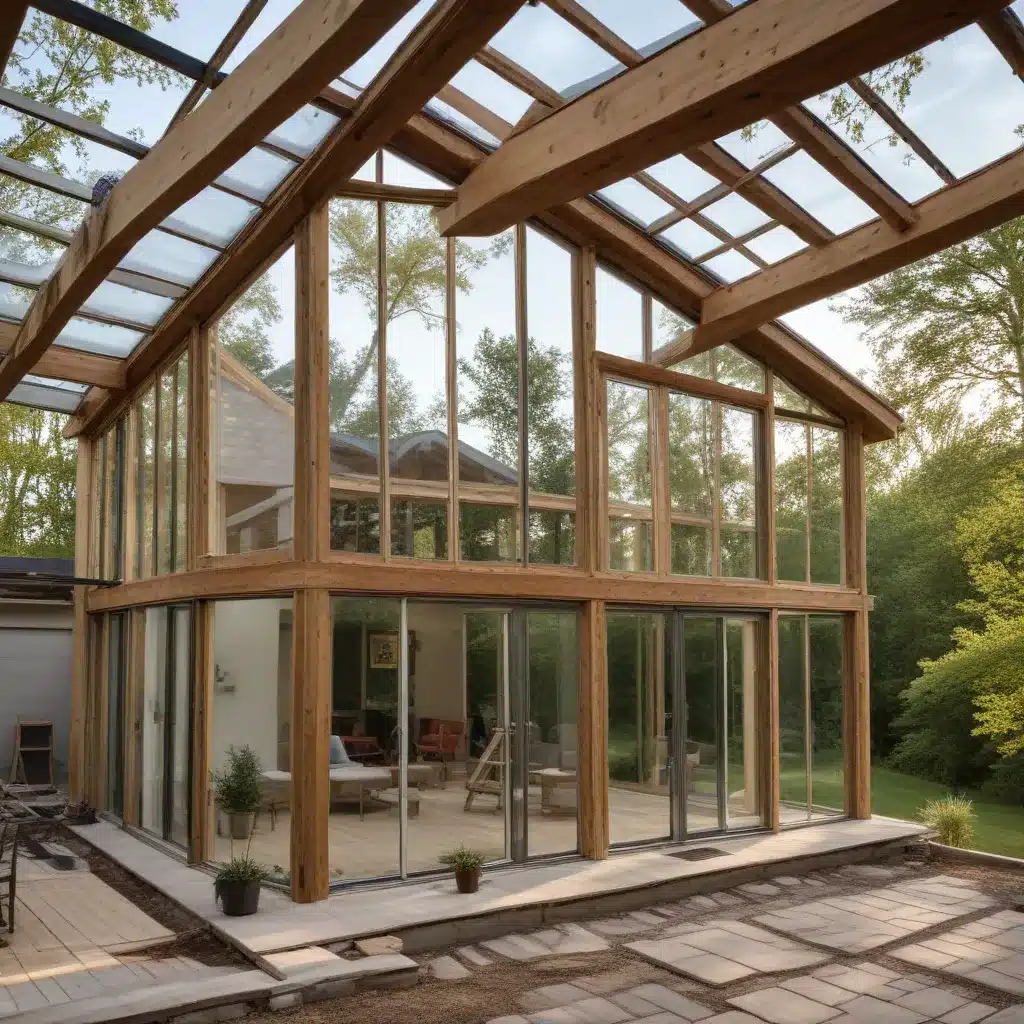
Considering a home addition to accommodate your growing family or adapt to new lifestyle needs? As an experienced home improvement consultant, I’m excited to share strategies for expanding your living space in a sustainable, eco-friendly manner. Whether you’re aiming to boost energy efficiency, minimize material waste, or create a healthier indoor environment, this guide will equip you with the essential knowledge to plan and execute your sustainable home addition project.
Environmental Considerations
At the heart of any responsible home renovation lies a commitment to environmental stewardship. When designing your addition, evaluating the environmental impact should be a top priority. Let’s explore some of the key focus areas:
Sustainable Building Materials
The materials you choose can make a significant difference in your project’s sustainability. Opt for renewable, recycled, or responsibly sourced options wherever possible. This could include materials like bamboo, reclaimed wood, low-VOC paints and sealants, or insulation made from recycled content. By carefully selecting these eco-friendly alternatives, you’ll reduce your carbon footprint and support a more circular economy.
Energy-Efficient Design
A well-designed addition can enhance your home’s overall energy efficiency, lowering utility bills and greenhouse gas emissions. Incorporate passive solar design principles, such as strategic window placement and high-performance insulation, to maximize natural lighting and temperature regulation. Additionally, consider integrating renewable energy sources, like solar panels or geothermal heating and cooling systems, to power your new living space.
Minimizing Waste and Emissions
Construction activities generate a significant amount of waste, but a sustainable approach can minimize this impact. Work with your contractor to develop a comprehensive waste management plan, exploring opportunities to recycle, repurpose, or responsibly dispose of materials. Additionally, prioritize construction methods and materials that have a lower embodied carbon footprint, reducing your overall emissions throughout the building process.
Architectural Strategies
Thoughtful architectural design is essential for creating a seamless, sustainable home addition. Let’s explore some key strategies to consider:
Integrating with Existing Structure
Rather than designing a completely detached addition, focus on integrating the new space with your existing home. This can involve techniques like adding a second story, converting an attic or basement, or expanding outward with a side or rear addition**. By leveraging the foundation and infrastructure of your current home, you’ll reduce the need for new materials and minimize the disruption to your property.
Maximizing Natural Light and Ventilation
Harness the power of passive solar design to create a bright, airy addition that reduces your reliance on artificial lighting and climate control. Strategically place large windows, skylights, and sliding glass doors to allow natural light to penetrate deep into the space. Complement this with efficient ventilation systems that promote healthy indoor air quality and minimize the need for energy-intensive cooling or heating.
Thoughtful Landscape Integration
As you plan your addition, consider how it will interact with the surrounding landscape. Incorporate native plants, permeable paving, and water-efficient irrigation to create a harmonious, eco-friendly outdoor environment. By mindfully integrating the architecture with the landscape, you can enhance the overall sustainability of your property.
Regulatory Compliance
While pursuing a sustainable home addition, it’s essential to navigate the relevant regulatory landscape. Understanding and adhering to local zoning and building codes, obtaining the necessary permits and approvals, and potentially seeking sustainable certification can ensure a smooth and compliant renovation process.
Local Zoning and Building Codes
Familiarize yourself with your municipality’s zoning regulations and building codes to ensure your addition complies with local requirements. These guidelines may include specifications for setbacks, height restrictions, energy efficiency standards, and more. Work closely with your contractor or architect to address any potential code-related challenges.
Permitting and Approvals
Depending on the scope and complexity of your addition, you’ll likely need to secure various permits and approvals from local authorities. This may involve submitting detailed construction plans, energy efficiency calculations, and waste management strategies for review. Be prepared to navigate this process, as it can significantly impact your project timeline.
Sustainable Certification Programs
Consider pursuing voluntary sustainable building certifications, such as LEED, Energy Star, or Green Globes, to validate the eco-friendly attributes of your home addition. These programs provide a recognized framework for evaluating and validating the project’s environmental performance, potentially offering additional incentives or recognition.
Homeowner Priorities
As you embark on your sustainable home addition journey, it’s crucial to consider your unique needs, preferences, and long-term goals. Balancing functional requirements, aesthetic considerations, and maintenance concerns will help you create a living space that truly meets your family’s needs.
Functional Needs and Lifestyle
Carefully assess your growing family’s needs, whether it’s expanding a nursery, creating a dedicated home office, or providing more flexible living spaces. Understand how the addition will integrate with your existing home and support your day-to-day lifestyle. Prioritize functionality, accessibility, and adaptability to future-proof your investment.
Aesthetic Preferences
While sustainability is a primary focus, don’t neglect the visual appeal of your addition. Strive to seamlessly blend the new space with the existing architectural style of your home. Explore design elements, materials, and color palettes that complement and enhance the overall aesthetic. This will create a cohesive, visually stunning result that you’ll love coming home to.
Long-Term Maintenance and Resilience
Consider the long-term maintenance requirements of your sustainable addition. Opt for durable, low-maintenance materials and systems that will withstand the test of time. Additionally, ensure that the design incorporates resilience against potential environmental stressors, such as extreme weather events or natural disasters, to protect your investment for years to come.
By meticulously planning your sustainable home addition, you’ll not only enhance your living space but also contribute to a greener, more responsible future. As you embark on this exciting project, I encourage you to explore the resources available at Reluctant Renovator for additional guidance and inspiration. Together, we can create a home that aligns with your values, meets your needs, and respects the environment.



